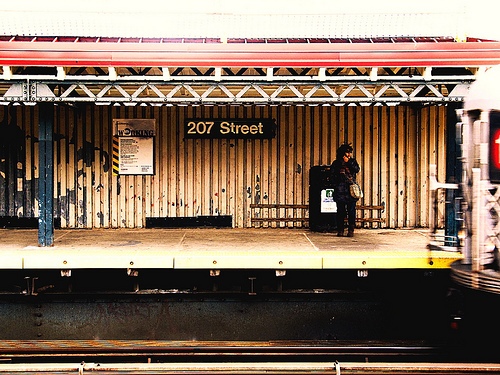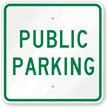Study: Public transit use linked to attitudes about immigration
For many commuters, hopping on the subway is akin to jumping into the melting pot. In fact, according to one recently released Harvard University study, commuting can impact attitudes on immigration. The study targeted 480 participants over several Boston-area commuter rail platforms, and discovered that when riders mingle with others of varied ethnic backgrounds, social acceptance is affected — at first negatively, and, over time, more positively.

The northernmost stop on the A train in Manhattan. From TheCoolQuest.
As FastCo reports, “Initially, being thrown into a crowded commuter train can have the immediate effect of fostering exclusionary attitudes between different ethnic groups.” But with time, rides “filled with unfamiliar faces” may cause people to become more accepting.
For the study, Harvard assistant professor of government Ryan Enos analyzed commuters’ reactions in largely white areas of Boston when Spanish-speaking riders — mostly men in their 20’s, and all hired by Enos — boarded their trains. Pairs of native Spanish-speaking Mexicans waited for trains at nine rail stations, boarding at specific times. They were not instructed to say anything in particular or to speak at all.
Riders on the trains — 83 percent of whom identified as white — completed surveys with a variety of questions that included three on immigration, such as whether English should be made the country’s official language, before and after the Spanish speakers were introduced to their commuter trains. The control group for the study was comprised of commuters from another train arriving at a similar time.
Just three days after the inclusion of the Spanish speakers, reports FastCo, riders revealed “more exclusionary, anti-immigrant attitudes” when compared with their survey responses before the inclusion of the Spanish-speaking riders. After 10 days, the study subjects expressed less of a bias — hinting that “attitudes soften over time.” Still, the study subjects maintained a higher anti-immigrant bias than in their first survey.
Researcher Enos noted that the experiment was important for studying prejudice “in a real world setting,” as it’s difficult to test stereotypes and prejudices in a lab, where subjects may be unwilling or unable to honestly share their attitudes. “These things like public transit and the way we build our cities very much affect how we interact with people and how we get along as groups,” Enos told the Boston Globe. “When we invest in infrastructure, we bring intergroup harmony by encouraging people to interact.”
Previous multicultural interaction studies focused on, for example, relationships between college roommates from different backgrounds, and “were difficult to orchestrate and failed to represent a wide cross-section of people,” reports the Globe. Public transportation serves as an ideal setting, according to Enos. Commuters take the same train every day, and notice newcomers. “It’s almost like a great experiment every time somebody steps on a bus,” Enos told the Globe. “If we can somehow capture their behavior when they step into this natural experiment, it can teach us a lot about humans.”
One expert, Sam R. Sommers, an associate professor of psychology at Tufts University, notes that the usefulness of public transportation as a human behavior lab may be overstated. Commuter areas, like the train platform, usually don’t offer the “opportunity for meaningful, substantive conversation or interactions.” Plus, the commuters in the study were still “warier” after the experiment than they were prior to it.
Yet Sommers admits that the findings of the study are valuable. “The initial effects of diversity can be negative and tough,” Sommers told the Globe. “But, with time, negative effects on cohesion and morale begin to diminish, and diversity starts to become an asset.”
Category: Uncategorized
















